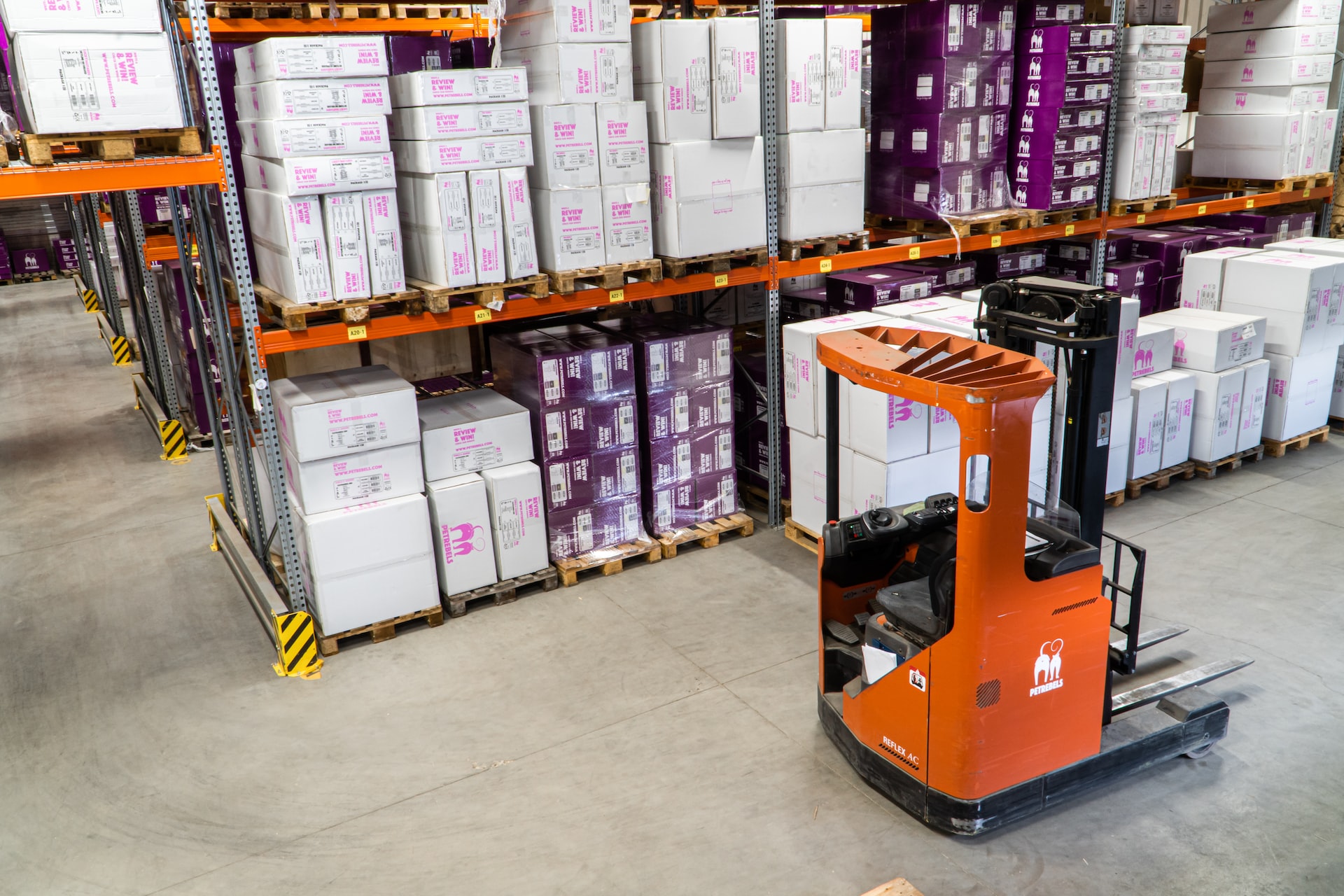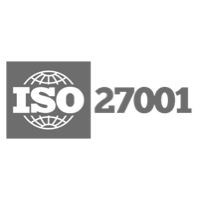Businesses that want to improve their supply chain efficiency should start by identifying and addressing the weak links in their chains. This may require making some changes to the way your business operates, but the benefits will be worth it.
By improving your supply chain efficiency, you’ll be able to save time and money, and improve your customer service. Implementing just a few of the tips below can help get you started.
What is supply chain efficiency?
Supply chain efficiency is the measure of how well a company’s supply chain functions. It looks at the various stages involved in getting a product or service from supplier to customer, and how well each stage is coordinated.
Efficiency can be improved by streamlining processes, reducing waste, and improving communication and collaboration between all parties involved.
When a company’s supply chain is efficient, it can operate more smoothly and effectively. This can lead to lower costs, better customer service, and improved overall profitability.
To achieve supply chain visibility and efficiency, companies need to carefully assess each stage of their supply chain and identify areas where improvements can be made. They also need to put systems and processes in place to ensure that these improvements are implemented and maintained over time.
Many factors can impact supply chain efficiency, including the type of products or services being delivered, the geographical locations involved, and the complexity of the supply chain.
By carefully assessing all of these factors, companies can develop strategies to improve their efficiency and performance.
Challenges in achieving supply chain visibility
Lack of integrated systems
Modern supply chains are intricate networks involving numerous stakeholders, from suppliers and manufacturers to distributors and retailers. Each of these stakeholders may utilize different software systems and tools to manage their respective operations.
This diversity often results in a lack of seamless integration between these systems, leading to fragmented data and an incomplete view of the supply chain. The absence of integrated systems can hinder effective communication and collaboration across departments, making it challenging to track products’ progress and respond to disruptions in a coordinated manner.
Investing in integrated software solutions, application programming interfaces (APIs), and middleware can bridge the gaps between these disparate systems, allowing for more efficient data sharing and holistic supply chain visibility.
Data silos
Data silos emerge when different functional areas or business units within an organization maintain their data repositories without effective mechanisms for sharing information. In a supply chain context, this can mean that each stage of the process accumulates data separately, preventing a comprehensive overview of the entire supply chain.
This disjointed data landscape inhibits the identification of patterns, trends, and potential areas for optimization. Breaking down data silos requires establishing standardized data governance policies, encouraging cross-functional collaboration, and implementing technology solutions that enable seamless data sharing.
Cloud-based platforms and data integration tools can play a pivotal role in integrating data from different sources to create a unified and accessible data repository.
Inconsistent or poor quality data
The accuracy and reliability of supply chain visibility heavily depend on the quality of the data being captured and utilized. Inconsistent data entry practices, manual input errors, and outdated information can compromise the integrity of the insights gained from the supply chain data.
This, in turn, can lead to suboptimal decision-making and operational inefficiencies. To address this challenge, organizations need to establish data quality standards, implement automated data capture processes, and perform regular data cleansing and validation.
Additionally, fostering a culture of data stewardship and providing training to employees can contribute to maintaining accurate and consistent data across the supply chain.
Limited real-time tracking
Traditional supply chain management often relies on periodic updates and batch processing of data. This lack of real-time visibility can lead to delays in identifying disruptions or anomalies.
Real-time tracking technologies, such as IoT sensors and GPS trackers, enable continuous monitoring of the movement and conditions of goods throughout the supply chain.
By leveraging these technologies, organizations can gain instant insights into the location, temperature, humidity, and other critical parameters affecting the quality and delivery of products. This timely information empowers supply chain managers to make rapid decisions, optimize routes, and proactively address issues.
Complexity of global supply chains
Global supply chains encompass a vast network of suppliers, manufacturers, distributors, and logistics partners operating across various geographic regions and regulatory environments.
This complexity makes it challenging to accurately track and manage the flow of materials, components, and finished products. The diverse array of stakeholders, cultural differences, and varying legal and regulatory requirements further amplify the difficulty of achieving supply chain visibility.
Overcoming this challenge involves leveraging advanced analytics, machine learning, and predictive modeling to anticipate potential disruptions and optimize supply chain operations.
Furthermore, fostering strong relationships and communication channels with partners across the supply chain can enhance coordination and transparency, contributing to better overall visibility.
How to improve your supply chain efficiency
Automate supply chain processes
Automating supply chain processes can help improve efficiency and optimize performance. By automating repetitive tasks, businesses can eliminate the need for manual data entry, which can help reduce errors and improve accuracy.
Automation can also help streamline communication between different parts of the supply chain, making it easier to track progress and identify potential issues.
In addition, automating supply chain processes can help to speed up decision-making by providing real-time data and analytics.
Improve supplier management
Many factors contribute to supply chain efficiency, but one of the most important is supplier management.
By working closely with suppliers and managing them effectively, companies can ensure that materials and products are delivered on time and meet quality standards. This, in turn, helps to improve overall supply chain efficiency.
Supplier management involves several activities, including supplier selection, supplier development, and supplier performance management.
Each of these activities is important in its own right, but they all work together to improve supply chain efficiency. Supplier selection is the process of choosing which suppliers to work with.
When selecting suppliers, companies should consider several factors, such as price, quality, delivery times, and flexibility. Selecting the right supplier is critical to supply chain efficiency, as it can make a big difference in the quality and timeliness of materials and products.
Improve inventory management
Inventory management is a key part of supply chain efficiency. By keeping track of inventory levels and managing them effectively, businesses can ensure that they have the right products in stock at all times.
This helps to avoid overstocking, which can tie up valuable resources, and understocking, which can lead to lost sales.
There are several ways to improve inventory management. One is to implement an inventory management system.
This can help businesses keep track of inventory levels, as well as reorder products when necessary. Another way to improve inventory management is to train employees on proper inventory management procedures.
This can help ensure that everyone in the company is aware of the importance of keeping inventory levels under control.
Finally, businesses can work with their suppliers to ensure that they are receiving accurate information about inventory levels. This can help avoid situations where products are out of stock or where there are delays in receiving new shipments.
Utilize software to manage supply chain
There are various software programs available that can help to manage and streamline supply chain operations. By utilizing such software, businesses can improve their overall efficiency and performance.
One type of software that can be used is inventory management software. This can help businesses keep track of their inventory levels and ensure that they are always stocked with the necessary products. This can help to avoid potential stock-outs and improve customer satisfaction levels.
Another type of software that can be used in order management software. This can help businesses to track orders and ensure that they are being fulfilled promptly. This can help to reduce turnaround times and improve overall customer service levels.
Transparency and visibility
To improve supply chain efficiency, businesses need to prioritize transparency and visibility across the entire supply chain.
This can be achieved through several strategies such as implementing a centralized data management system, using digital tracking technologies, collaborating with suppliers and partners, monitoring and analyzing data, and using predictive analytics.
A centralized data management system can help streamline and automate data entry and sharing across the supply chain, ensuring that all parties have access to the same up-to-date information.
Digital tracking technologies such as RFID tags, barcodes, and GPS can help improve visibility and transparency, allowing businesses to track inventory and optimize delivery times.
Risk Management
Managing risks is crucial for an efficient supply chain. To effectively manage risks, businesses must first identify potential threats and vulnerabilities that exist in their supply chain. These can include natural disasters, geopolitical risks, supplier failures, and cyber-attacks.
Once identified, businesses can then assess the impact of these risks and develop mitigation strategies to minimize their impact. For instance, businesses can diversify their supplier base, establish contingency plans, and invest in cybersecurity measures to protect against potential cyber-attacks.
In addition, businesses can implement real-time monitoring and response capabilities to quickly address any disruptions that may occur.
Planning and forecasting
Effective planning and forecasting are critical components of improving supply chain efficiency.
To enhance planning and forecasting, businesses can implement several strategies such as developing a demand forecasting model, utilizing predictive analytics, establishing a sales and operations planning (S&OP) process, collaborating with suppliers and partners, and implementing real-time monitoring.
A demand forecasting model can help businesses predict future demand for their products, allowing them to plan their production and inventory accordingly.
Metrics to measure supply chain efficiency
Inventory turnover
Inventory turnover, or inventory turns, is a measure of the number of times inventory is sold or used in a period. It’s a key metric for assessing the efficiency of a company’s supply chain and its ability to meet customer demand.
Inventory turnover can be calculated using data from a company’s balance sheet and income statement. The most common method is to divide the cost of goods sold (COGS) by the average inventory for the period. This provides a measure of how many times, on average, inventory is turned over in a period.
Customer order cycle time
Customer order cycle time is the total amount of time that elapses between when a customer places an order and when they receive the product or service. The customer order cycle time can be used to measure the efficiency of a company’s supply chain.
A shorter customer order cycle time indicates that the company can fulfill orders more quickly and efficiently. A longer customer order cycle time may indicate that the company’s supply chain is less efficient.
Fill rate
The fill rate is a measure of supply chain efficiency that looks at the percentage of customer orders that are filled on time. A high fill rate indicates that the company is able to meet customer demand and keep its shelves stocked, while a low fill rate may indicate problems with inventory management or manufacturing.
There are a few different ways to calculate the fill rate, but the most common is simply to take the number of orders that are filled on time and divide it by the total number of orders. This gives you a percentage that can be used to compare different companies or different periods of time.
To calculate the fill rate, you will need to know the total number of orders and the number of orders that were filled on time. You can usually find this information in the company’s order management system.
Perfect order rate
Perfect Order Rate (POR) is a supply chain metric that measures the percentage of orders that are delivered to the customer without any errors or defects. A perfect order is one that is delivered on time, complete, accurate, and damage-free.
A high Perfect Order Rate indicates that the company is delivering products to customers efficiently and accurately, which can lead to increased customer satisfaction and loyalty.
On the other hand, a low Perfect Order Rate suggests that the company is experiencing supply chain problems that need to be addressed to improve customer satisfaction and profitability.
Lead time
Lead time is a supply chain metric that measures the time it takes for a customer to receive their order after placing it. It includes the time it takes for the supplier to receive the order, process it, manufacture the product (if necessary), and deliver it to the customer.
Lead time is an important metric because it affects customer satisfaction and inventory management. Longer lead times can lead to lower customer satisfaction and increased inventory carrying costs, while shorter lead times can lead to higher customer satisfaction and lower inventory carrying costs.
Cost of goods sold
Cost of Goods Sold (COGS) is a financial metric that measures the direct costs of producing or purchasing the goods sold by a company during a specific period. COGS includes the cost of materials, labor, and overhead associated with the production or purchase of goods.
The formula to calculate COGS is:
COGS = Beginning Inventory + Purchases During the Period – Ending Inventory
For example, if a company had $10,000 worth of inventory at the beginning of the period, purchased $20,000 worth of inventory during the period, and had $8,000 worth of inventory at the end of the period, the COGS would be:
COGS = $10,000 + $20,000 – $8,000 = $22,000
Customer satisfaction
Customer satisfaction is a critical metric for businesses to track because it measures how satisfied customers are with their products or services. Satisfied customers are more likely to be loyal and make repeat purchases, which can drive revenue and growth.
There are different ways to measure customer satisfaction, such as customer feedback surveys, Net Promoter Score (NPS), customer retention rate, and online reviews and ratings.
By measuring customer satisfaction, companies can identify areas where they are doing well and areas where they need to improve.
Gain visibility throughout the supply chain with Detrack
If you’re looking to gain visibility throughout your supply chain and streamline your logistics operations, consider using Detrack.
With its real-time tracking capabilities and cloud-based platform, Detrack can help you monitor the movement of goods from your warehouse to the end customer, reducing manual paperwork and improving overall efficiency.
Plus, with its ability to provide customers with real-time tracking updates, Detrack can enhance customer satisfaction and reduce customer inquiries. Sign up for Detrack today to gain visibility and control over your supply chain.



























